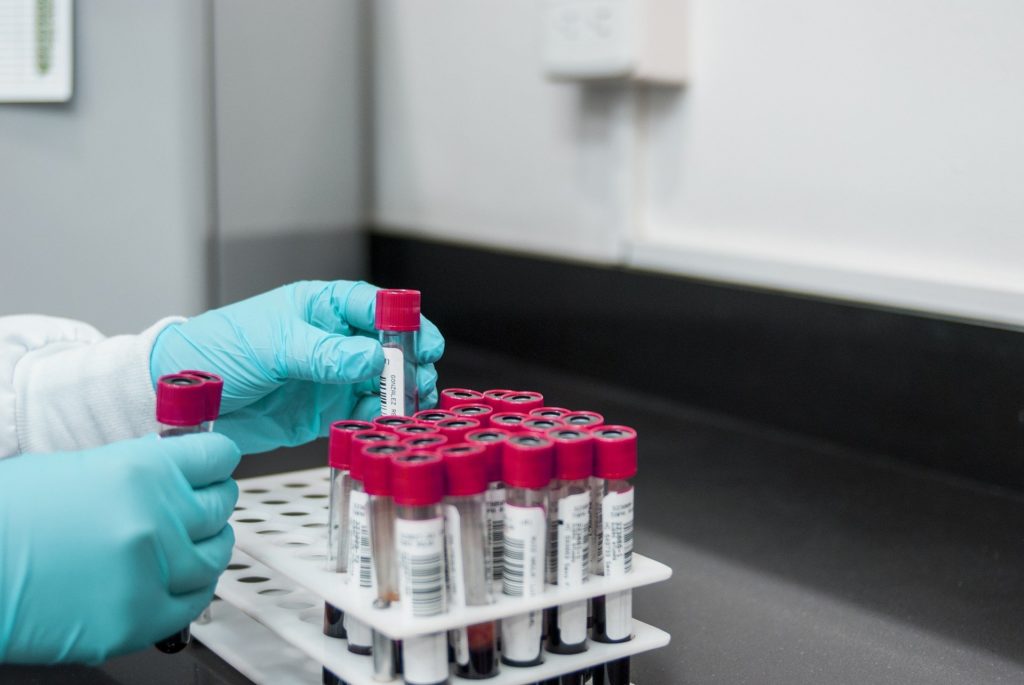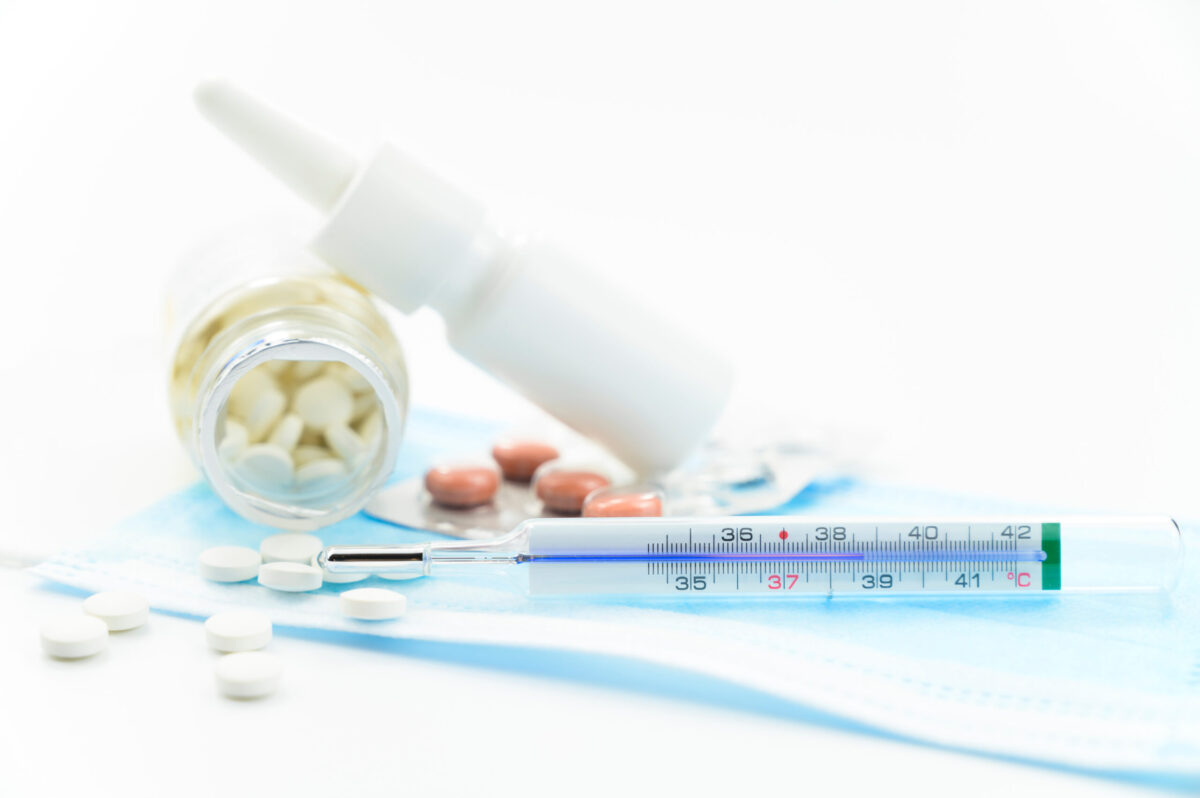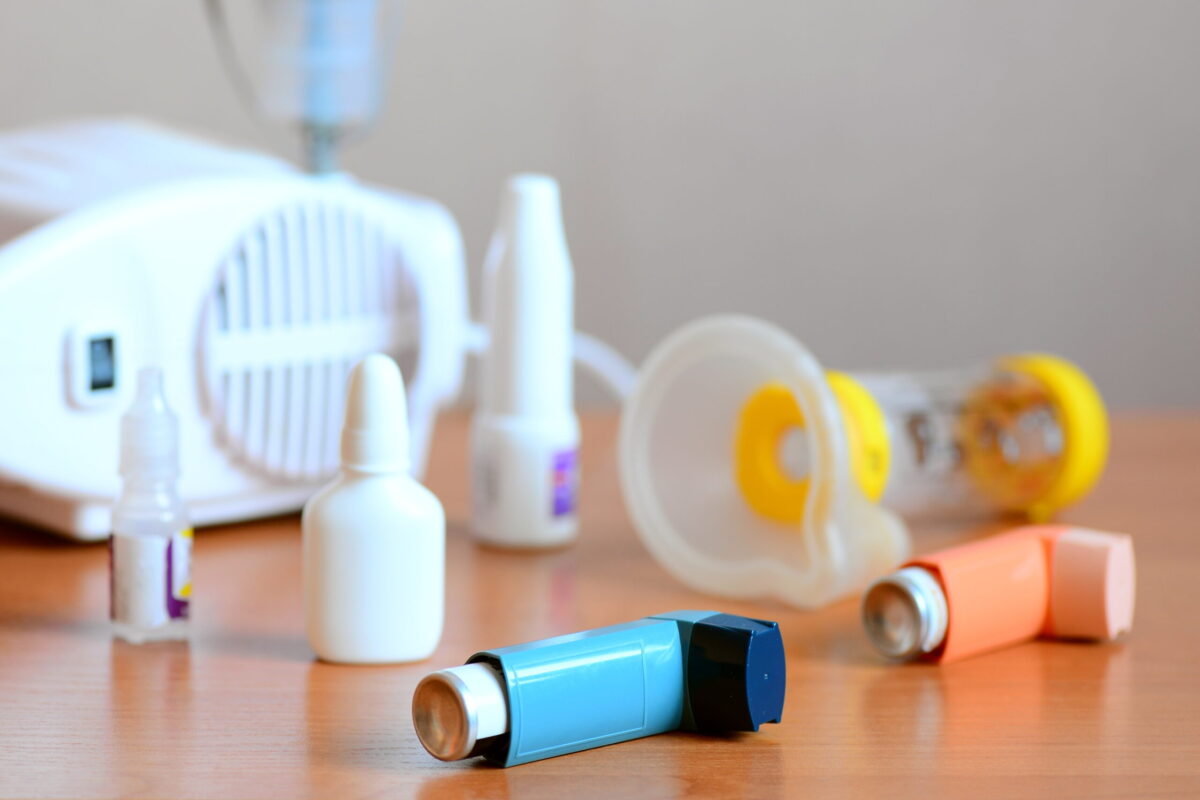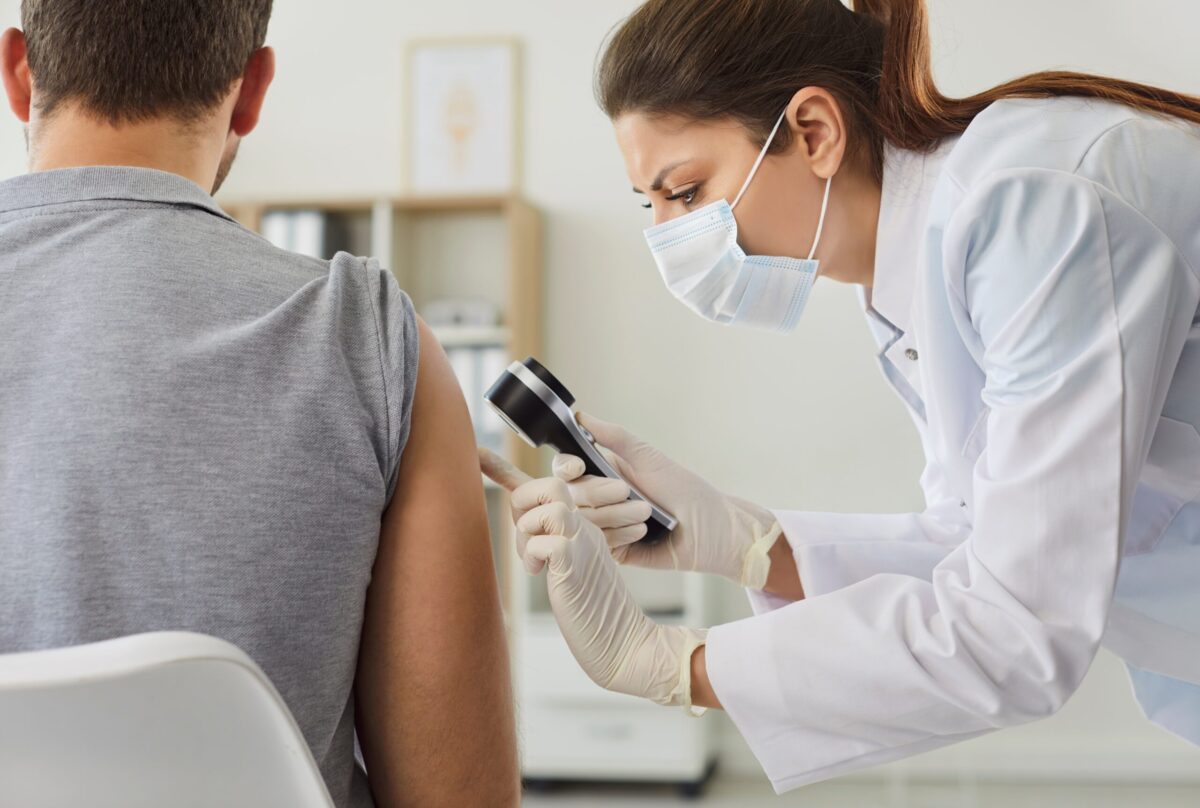The power of leveraging clinical data to decipher disease mechanisms and fuel drug discovery has rapidly grown in the era of genomics and personalized medicine. Data generated through high-throughput omics approaches paired with clinical patient records can give rise to remarkably robust datasets to inform and guide disease insights and development of targeted therapeutics.
Generation of strong research dataset cohorts must begin with high-quality clinical samples. Biobanks are used for the coordination of high-yield patient sample collection. There are a number of complexities associated with the collection, banking and distribution of clinical samples. In addition, there are important questions around collection protocols pertaining to consent models and return of results.
Moreover, biobanks are no longer passive biorepositories for accrual of samples and serve a more utilitarian function in identifying and coordinating specific research cohorts for longitudinal and prospective studies.
In a webinar hosted by Genuity Science, the company assembled a panel of experts from clinical and research centers across North America and Europe to discuss some of the opportunities and challenges associated with the effective generation and use of biobanks and biorepositories for research and drug discovery. As biobanks come to support new and innovative research programs, they must be designed to accommodate the efforts while being aligned with the needs of research centers, collaborators and partners.
In a townhall-style format, the panelists discussed some of the challenges involved in coordinating both national and international-level biorepositories to support translational research studies. The speakers shared their perspectives on building efficiencies into biobanking, including innovative new approaches, types of biosamples collected from population-based and/or disease-specific groups of individuals, as well as challenges of the storage and sharing of data when dealing with enormous amounts of data generated from genomic sequencing.
Biobanking will continue to play an integral role in accelerating drug discovery and development, which will necessitate access to a larger array of biological samples. The webinar highlighted the importance of maximizing utility and sustainability for the long-term success of biorepositories and biobanks.
Partnerships and Establishing Research Cohorts
Genuity Science focuses on population genomics as a tool to derive novel biological insights through partnerships with industry-leading pharmaceutical and biotech companies. The company says its goal is to ensure that such insights can accelerate drug discovery and offer the potential to target and manage disease in new and innovative ways.
This includes precision medicine strategies which can be effectively guided through high-level translational research led by clinical data.
Genomic biomarker discovery helps drive the development of innovative new personalized therapies. Genuity Science believes that central to population genomics-driven R&D is the availability of excellent research core cohorts that combine high-quality biosamples with deep clinical phenotype data.
Establishing national and international research cohorts through partnerships and collaborations between teaching hospitals and biobanks is key to driving successful research programs. Through these collaborations, cohort research dataset sharing programs allow for whole-genome sequence and genotype data to be made available for independent research.
In the webinar, experts in fields ranging from oncology to neuropathology research shared their experiences in designing and operating research cohorts and biobanking within different contexts. However, they all share the same overarching goals of understanding disease biology, identifying disease biomarkers and developing therapies.
Biobanking Models
Dr. Gordon R. Bernard, executive vice president for research and chief research officer at Vanderbilt University Medical Center, shared his experience in helping set up a DNA and clinical data resource called BioVU. Dr. Bernard’s clinical research interests are in the areas of sepsis and acute respiratory distress syndrome (ARDS).
BioVU is a renowned, health system-wide biorepository that Dr. Bernard helped establish at Vanderbilt. The project began in 2004, in the early days of biobanking for DNA, says Dr. Bernard, and has grown tremendously since.
Interestingly, the biorepository was initially set up as an opt-out program where, as the default, clinical samples were obtained from all patients that came in for clinical care. Working with regulatory and legal authorities and ethics boards, the so-called opt out system was devised and was able to generate anywhere from 600 to a thousand samples a week, explains Dr. Bernard. While it was first limited to adults, it was expanded to include pediatric collection after a few years into the program.
The idea behind the program stemmed from the consideration that collected patient samples were discarded after a few days. Dr. Bernard says the thought was to take the samples and move them to the DNA bank instead.
However, in 2015, the National Institutes of Health (NIH) decided that “any biosamples that were to be used for research purposes supported by the NIH would need to be fully consented,” Dr. Bernard explains. This prompted BioVU to move to a consented model. There were very few differences and adjustments that had to be made between the two models. In the opt-out model patients were provided with an information sheet explaining the use of samples for research purposes, which they didn’t sign. The opt-in consented model involved the same information sheet, more or less, but the only difference was that it now had to be signed by patients.
“And about 85 to 90 percent of patients signed it, gave us permission, and of course, we’re committing to autonomy for those patients. The system allows for clinical sample recycling,” Dr. Bernard explains.
Sample Collection Standardization
Dr. Samantha Hutten, staff scientist at the Michael J. Fox Foundation for Parkinson’s Disease Research (MJFF) shared insights about patient sample collection pertaining to biomarker research in Parkinson’s disease.
Dr. Hutten has led a portfolio on biomarker assays with a focus on fluid-based biomarkers. She also oversees MJFF’s biosamples cohort strategy, which involves about 20 of the foundation’s cohorts, including access to sample resources.
“One of the greatest hurdles to drug development is a lack of standardized, reliable, quantitative biomarkers for disease diagnosis and progression. We don’t have definitive biomarkers for Parkinson’s disease. So, for that reason, we’ve invested significant resources in developing this cohort infrastructure to support every stage of biomarker development,” Dr. Hutten says.
Now, she says all of the biosample cohorts utilize the same standardized collection and processing protocols.
“For example, we have cerebrospinal fluid (CSF) collected from around 20 or so studies at over probably 50 sites around the world. And it’s all being collected in the exact same way using the same tubes and the same spin protocols,” Dr. Hutten explains.
“And when we started biobanking around 15 years ago, we didn’t really appreciate how this is, in and of itself, quite a feat.”
Moreover, when the foundation initiated their flagship observational clinical trial —the Parkinson’s Progression Markers Initiative or PPMI in 2010 — there weren’t really clear examples in the field of standardized longitudinal sample collection across multi-international sites. “But we were able to set the standard for sample collection and Parkinson’s disease, and we’re very proud of that,” Dr. Hutten says.
Dr. Maeve Lowery, researcher and professor of Translational Cancer Medicine at Trinity College Dublin and a consultant medical oncologist at Saint James Hospital also discussed the importance of sample standardization.
As chairperson of the Counselor Molecular Diagnostics Advisory Group, which is part of the National Cancer Control Program in Ireland, Dr. Lowery’s clinical and translational research involves design and conduct of Phase I and II clinical trials in patients with gastrointestinal malignancies.
Having initially worked as a consultant at the Sloan Kettering Cancer Center in New York, and then returning to Ireland three years ago to join the newly formed and accredited cancer institute in Dublin, Dr. Lowery shared her perspectives on both jurisdictions, focusing on the European side as she is involved in starting up and “future-proofing” the biobank and bioresources at the cancer institute. She says dynamics with respect to research goals, priorities and regulations have changed over the past decade. There are therefore challenges associated with navigating new goals and new rules.
Some of the challenges are with respect to new General Data Protection Regulation (GDPR) regulations in the EU. Despite the changes, it remains important to “ensure that we’re making the best use of the sample that our patients are providing,” Dr. Lowery says.
One of Dr. Lowery’s research projects involves the development of organoids from samples obtained from cancer patients, to generate a living bioresource. This is prospective research and patients are consented, “but there are ongoing issues and discussions among the consortium in terms of how we best utilize those resources and future proof them for future use going forward, and remain, of course, GDPR compliant and respectful of the patients in it and their involvement in such a study,” Dr. Lowery says.
A Biorepository versus a Bioresource
Dr. Stephen Sawcer, professor of neurological genetics at the University of Cambridge and an honorary consultant neurologist at Addenbrooke’s Hospital in Cambridge, UK, is focused on the genetics of multiple sclerosis (MS) in his research, including genome-wide approaches to examining the disease.
Dr. Sawcer provided perspectives on his UK experiences in biobanking and genomics research. He explains that while the British government used to allocate each hospital a certain amount of money to do research, that changed with the inception of the National Institute for Health Research (NIHR). The agency’s approach was to grant money only when a hospital had recruited patients to a research study.
He says, “this generated an environment in which it was very easy, shall I say, to recruit subjects into studies.”
This allowed multiple sclerosis researchers like Dr. Sawcer to set up collection and recruitment centers nation-wide. “We had over 50 centers recruiting at one point across the country, collecting samples for our MS-based research. It also generated biomedical research centers across the country.”
He says, “I think one of the most inventive things that came out of that was rather than a biorepository, [it was] a bioresource.”
In a way, a bioresource allows for more directed and purposeful sample collection.
Typically, Dr. Sawcer explains that if you’re not quite sure what sample to collect or how to collect it, and at a future time when someone wants to do a study, they may realize that samples have not been collected in a particular way required for the study.
Therefore, “the concept of a bioresource is that rather like Maeve’s living samples, these are living patients. What you recruit is a list of people who consented to consider being part of research in the future,” explains Dr. Sawcer.
This approach was very successful in Cambridge he says, which now has almost 20,000 people in its spread across the country. The bioresource concept allows for the prospective collection of disease-specific elements in the sample collection process.
A bioresource creates sets of patients that you can go to for specific sample collection. DNA remains an easy and obvious component for extraction from samples, as “whether you take it now or in ten years’ time, it’s going to be the same,” Dr. Sawcer says.
However, he says there are missed opportunity samples as well, citing that some “[cancer] patients might not be around if we don’t collect the samples when they’re there.”
Nevertheless, the DNA component is an advantage of a bioresource, he says. For example, if you want to do a functional study on a variant and have identified a variant that’s of interest in your disease and want to explore the functional consequences of it, ideally you would want equal groups of the three genotypes.
He explains that “if that variant has a frequency of ten percent, only one percent of people are going to be homozygous for the rare allele. So if you want 100 of those subjects, you’re going to have to collect 10,000 people. Now, if all you’ve already got is a bioresource of 20,000 people that have already been genotyped, you can choose those from that sample and focus your effort.”
This curated and streamlined approach has proved to be incredibly efficient, Dr. Sawcer says. It allows you “to do functional studies that are on groups of patients with a particular genotype, or a particular phenotype, because that information is being, and has been collected.”
Genotype Data Curation and Return of Results
Biobanks contain a wealth of information, ready to be extracted, analyzed and purposed for gaining insights into disease biology and development of therapies.
DNA analysis has become an almost imperative first step in clinical sample analysis. And now with next-generation sequencing, large amounts of data are generated that need to be stored, accessed, shared and safeguarded using appropriate measures.
Dr. Bernard says all of the information from DNA analysis has to be re-loaded into a biobank databank so that it’s reusable by other people. BioVU currently has about 3.2 million clinical records, which are de-identified, yielding a synthetic derivative of the data.
He explains that it is a very sophisticated system of replacing identifiers with artificial identifiers so that when you read the medical record, it reads like a non-redacted medical record. But all of the identifying information is artificial.
DNA samples can then be linked to the clinical records using the new artificial number, which is a one-way hash that cannot be traced backwards. So far, about 260,000 samples of DNA have been matched this way.
The general problem of return of results to participants remains an issue for the world in general, says Dr. Sawcer. “By having a system where we cannot get back to the patients with this information, we’re somewhat covered for that particular problem until the world figures out how to deal with return of results in an efficient way.”
Amidst the popularity of what are now almost go-to genome-wide association studies (GWAS), there is emerging interest in phenome-wide association studies (PheWAS) studies in genetics where the association between single-nucleotide polymorphisms (SNP) or other types of DNA variants is tested across many different phenotypes.
“BioVU is a rich resource knowledge that is among the largest in the world. And we are only scratching the surface of what it can be used for,” says Dr. Bernard. “We are looking for ways to leverage this resource, both with commercial entities and with investigators around the world and academic institutions, and have had hundreds of collaborative projects already.”
Similarly, although a different setting from a clinical center, Dr. Hutten says that the biosamples that the Fox Foundation collects are made freely available to researchers across academia and industry upon request. The only catch, she says, is that the samples are sent out blinded so that researchers are unaware of which are [disease] samples, what mutations are present and which are controls. In addition, data that is generated from the samples has to be returned to the foundation’s database so that it can be made available to the entire research community in real time.
Once an investigator completes their analysis on whatever biofluid they’re looking at, they return the data to the database and are then given an “unwinding key,” which can be used to link the generated data to a wealth of data already in the database on the same subject, including clinical data, imaging and biological data. “This very rigorous study design and data sharing protocol is really a critical aspect of MJFF’s core mission,” Dr. Hutten says.
Moreover, as a patient-centered organization, the foundation aims to keep the needs of the community it serves top of mind, says Dr. Hutten. As such, she says, “We spend a significant amount of time and energy educating our audience on the unmet needs for Parkinson’s disease therapeutics, and the unique role that they can play in helping us to develop a cure by participating in some of these cohort and biomarker studies. And this really helps us to identify and maintain relationships with our study participants, which is critical for some of these longitudinal research cohort studies.”
At the cancer institute in Dublin, one of Dr. Lowery’s personal research projects involves personalized onco-genomics. This encompasses utilizing germline mutation profiling and whole genome sequencing and using the information for therapeutic decision-making for the patient in real time. While these are considered to be research tools, Dr. Lowery echoed Dr. Bernard’s point about the ongoing issue of return of results to patients in real time.
It is difficult to determine “where the interface between research and clinical care and facts sits, and how we best can prepare patients for it,” says Dr. Lowery.
Data Storage and Sharing
The importance of data sharing was highlighted by the panelists in the discussion. Dr. Lowery says there are challenges that she and her collaborators have encountered in terms of the international sharing of biosources of information that spans not just across the EU, but also the US and Canada. New regulations in different regions can introduce challenges for international collaborative groups. In the end, she says the goal is “to share our expertise, which, of course, is so important to improving outcomes for all of our patients.”
Dr. Hutten says that one of the things they’re beginning to see among their global interactions is that the infrastructure for the next wave is around data and data management. And this means that health systems are starting to develop the infrastructure for storing and managing samples in a standardized and compliant fashion.
The fundamental question is whether systems can manage and make use of the data at scale.
Data management and the use of data is a very timely question, says Dr. Bernard, which will require cloud storage solutions.
Up until now, the focus has primarily been genotyping, but now with the shift towards sequencing, the local computing resources are often not there to handle it. Cost is another factor with sequencing technologies and data storage.
Dr. Bernard says, “It’s stifling, actually. Because of the efficiency with which our system works, it’s not been that expensive to biobank. But going into the future with managing massive amounts of data in the cloud, that will be a challenge.”
Dr. Sawcer says coping with whole genome sequencing data, “locally, is a major crisis for us.”
As researchers generate whole genome sequences, sometimes there is no centralized data system at an institute or research center for the data.
Dr. Sawcer says this is a problem as, “everyone is linked to cope with this coming tsunami of data we need, and I can’t see it being done without the cloud.”
In fact, one of the stated aims of GDPR was to make it easier for data to be exchanged. That was one of the primary reasons that the GDPR was introduced, says Dr. Sawcer. But in his experience, “the problem is each site interprets the regulations rather differently.” Dr. Lowery agrees with this, saying that GDPR has been interpreted in every European country somewhat differently, making it difficult to know the GDPR compliance. This makes data sharing between countries a general challenge.
Dr. Lowery agrees that the paralyzing effect of the regulations on some of her group’s retrospective research has been difficult. However, she says it’s also a big opportunity to have so much data stored in the cloud, all totally shareable under the correct modulations and permissions, which gives researchers huge power in terms of learning from very large cohorts of patients. In addition, AI, machine learning and other new tools present tremendous scope for working with the enormous amounts of generated data.
Dr. Hutten says that people may also want the data in a different form, or different users may have different capabilities. She explains that one of the things that they’ve struggled with is trying to make whole-genome sequencing data available in different formats.
She says, “one of the things to keep in mind is that all of these different data formats have different levels of processing.” For example, in some cases you may get the raw data itself, whereas, in other cases, you may get a version of a processed dataset. “And how to handle that and have different people looking at the different flavors of data in different ways, can be another challenge that we haven’t addressed yet.”
Data Disclosure and Incidental Findings
The important question becomes how health systems, and individual researchers, think about responsible management of findings into the future. Therefore, the management of findings that arise from the research or analysis of data, including secondary or incidental findings, all comes into play.
Dr. Bernard says that although findings are published, they are not returned to the patient. He says, “we have a lot of pressure from our geneticists and others in the system to convert this to a fully identified bank, so that they can contact people and follow up and do other things [such as] survey them and so forth. Frankly, I have resisted that. It would quadruple the cost of maintaining the system. The overhead for managing that is massive.”
Moreover, he says, “I don’t know how to do it, and I don’t see anybody that knows how to do it yet.” And there’s a lot of controversy about return of results.
Dr. Sawcer says the return of results isn’t a new problem as it is akin to incidental findings in medicine. He says any radiologist is familiar with the concept of an incidental finding on a chest X-ray, for example.
He says there’s always a worry about that sort of thing and that it’s not a genetic-specific problem. He also thinks “it’s not necessarily completely negative, because when that nodule on the X-ray is found, that often is an advantage to that person even though it wasn’t looked for.”
Finding genetic variants can be helpful and actionable for people, and their relatives could benefit from that information.
However, Dr. Bernard says the problem is that the electronic systems and technologies don’t allow for going back to a 20-year-old chest X-ray; however, in genetics, you can go back and look at variants. “The variants of unknown significance are increasingly being categorized as having some significance; they’re in transit, from not important to important, or sometimes in the other direction [where the] importance [may] decrease”
Dr. Hutten explains that, MJFF provides better results back to patients with genetic mutations. “We support genetic counseling for participants who are enrolling in our cohorts. And I think that that can be a tool that you can leverage as part of your ongoing patient engagement and retention opportunities,” she says.
She says that while they can’t give them results about biomarkers because there are no validated ones yet, or about imaging scans, they can tell them if they have a particular genetic mutation (only pertaining to the three common genetic mutations in Parkinson’s, and not the entire genome), and that can be something that they’re interested in. It can inform their family dynamics and be used as a recruitment tool to pull other members of families where these genetic mutations are prevalent. “So, that is something that we’re doing, and it is costly,” she explains.
Dr. Sawcer says one of the main reasons why the whole research community is afraid of incidental findings is the associated cost. “Because there’s this perception that as soon as we go down that [path], who is going to pay, to interpret [etc.]? It’s a lot of work, begging the question of who would support the work? And would it be the responsibility of the researcher to look for incidental findings? Researchers could very well say, ‘I’m doing genome sequencing, and I’m only interested in this variant, because it happens to be associated with MS.’”
Dr. Lowery says it’s quite complex and comes down to explicit consent and clear communication with the patient. She says, “informed consent is not really a document. It’s actually a discussion between the consenting professional and the patient.”
Patient Engagement
There has been growing emphasis on patient-centric approaches in clinical research. Patient-centric approaches prioritize patient engagement in the design of research protocols, patient retention in clinical trials, sharing of research results and providing feedback.
Dr. Lowery says, “patients should be sitting at the table when we design those forms, when we think about it, because we don’t really have the answers.” She says, the investigators and doctors know they need to listen to the patients. Sometimes patients want the data back and sometimes they don’t, nor are they sure what they wanted to pass on and share with relatives. “I think we just have to engage the patients in terms of that decision making going forward to get a roadmap of where we go from here.”
Dr. Sawcer says that there could be differences in attitude on what patients may want to know depending on whether they have an illness or not. “When you’re sitting there and you have got an illness, your attitude is different and that’s when you say maybe I don’t want to know this,” he explains.
Dr. Bernard says that BioVU has two community advisory boards, one that is specific to BioVU and one that is more general to the clinical research programs.
“Both are informed about everything that we’re doing with regard to the research, either with BioVU or any other research.” Moreover, community representatives are present on some scientific review committees that decide on funding for pilot programs, for example.
Dr. Hutten says that at MJJF, there is a patient council of advisors, which is made up of people at various stages of their disease and their caregivers that can help inform scientific priorities, therapeutic strategies, cohort studies, as well as types of biosample collection and complexities, around data return. “I think key to this is remembering that the participants are really partners in the research process. So they need to be engaged at every stage.”
For example, she says the way they do it is through quarterly newsletters with study updates, as well as webinars. In the foundation’s flagship PPMI study that has 30 clinical sites around the world, a representative from the foundation is sent out once every year or two to an event dinner to interact with participants and answer any questions that they have, she explains. It’s important to keep patients engaged and share high-level results of a study.
Additionally, “there is an educational component where people need to understand what biomarkers are and why they’re important before we can even think about engaging them in our sample collection and cohort research,” adds Dr. Hutten. “This is something that we build into all of the talks that we’re giving that are patient and caregiver facing. Also, the retention opportunities are used “to make sure that we can continue to engage people and also continue to drill down on what the problem is, and how they can partner with us to help solve it.”
Dr. Lowrey says that the cancer institute has also set up a patient engagement program to give patients a voice when designing studies. However, education can be an issue in terms of dealing with patients who may not be health literate. On the other hand, having highly literate patients can skew things and lead to oversight of underrepresented patient groups.
This is why she feels community education is important. “Give people the tools and get healthcare literacy to the point where people can take a seat at the table and know what they’re not asking because sometimes some patients don’t even know what they should be asking. In the end, it’s important to make sure you have all voices equally, and adequately heard,” she says.
Dr. Sawcer says that while he feels that patients can voice opinions and provide input on general need-based things, the finer details should be left to the researchers and clinicians. For example, he says patients certainly should not be consulted about what type of mouse to use in a study.
“If you want to build a bridge, it’s perfectly reasonable to ask the users of the bridge where [they would] like the bridge to go, and what they want it to look like. But you shouldn’t ask them what type of concrete or steel to build the bridges,” he says.
Dr. Sawcer says instead, it is important to deliver feedback to patients in terms of showing them what the research has generated. He gives the analogy of how an organizer might debrief the parent of a child who participated in a swimming event for charity: “This is what your daughter swam up and down the swimming pool for, to raise this money for the MS society. This is what we did with the money. This is the difference that we make and that’s really important to engagement, trying to explain what has been discovered, in a lay way.”
Countering Science Misinformation
It is also critically important to provide the right information and dispel misinformation. For example, Dr. Bernard says that when they launched BioVU, there was lot of talk about cloning at the time. “People had in their head that if they got cloned, there would be a person that would look like them sitting right next to them. And, hence, we felt like this whole DNA thing was a very sensitive topic, [which is why] we took so much time to work through all the different nuances.”
Dr. Sawcer agrees that this is still a common question. Moreover, the lay perception of genetics comes from shows like CSI and others dealing with forensics, or X-Men movies and some type of mutant interpretation of genetics, which are given by the media, he says. “And there is a certain DNA exceptionalism where media coverage of DNA and [genetic] research in general is a little bit vulnerable to disinformation or alarmist reporting. What’s the solution?”
The solution is to get the right information out. And this is done by sharing the good things, Dr. Sawcer says. “You show the successes where you’ve taken a family, where a child had no treatment, and now the cause has been found.” Moreover, personalizing therapies in oncology is now a real thing that has revolutionized the field, he adds.
Dr. Lowery says patients are generous and want to know whether information is going to, or has, helped somebody else. “They’re really looking to make sure that it benefits somebody somewhere rather than directly back to themselves. They love to hear those success stories.”
“If a breakthrough has been made, have their samples contributed to a bigger cause? I think absolutely [communicating] those success stories back to patients is really good for patients, and it’s really good also for us in terms of offering education on the value of studies.”
Genomics Research-Driven Biorepositories
With the advent of new genomic technologies and approaches to study disease and foster development of therapeutics, the value and power of biorepositories for biosample collection and distribution must be maximized to fuel the next wave of genomic research.
Creating robust biorespositories driven by defined research projects and collaborations will help drive efficient and effective sample collection protocols. The repositories must also have some degree of fluidity as needs can evolve and change over time.
The sheer wealth and scale of genomic data that is becoming available will only be as useful as the tools that are used to extract, analyze and apply the data. The quality and utility of genomic data is tied to the quality and techniques of biobanking, which together can lead to powerful biological insights and therapeutics.
Register to watch Genuity Science’s free webinar on the topic of maximizing biorepositories for research and development to learn more and hear from the expert panelists.








Join or login to leave a comment
JOIN LOGIN